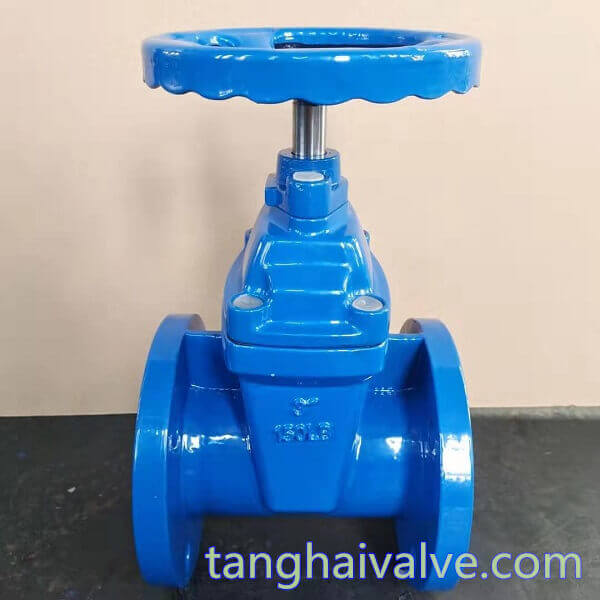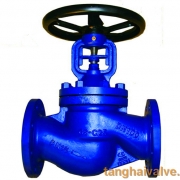Structural characteristics and suitable medium of soft sealing gate valve
Structural characteristics of soft sealing gate valve:
Gate valves are mainly used in water-passing pipelines, but traditional gate valves may leak or corrode during use, which affects the performance of gate valves. As an upgraded product of traditional gate valves, the emergence of soft-sealed gate valves solves the problems of traditional gate valves that are easy to leak, easy to rust, and have poor elasticity. This article will give an introduction to the structural characteristics of soft sealing gate valves.

AWWA C509-C515-resilient seated wedge gate valve-DN80-150lb (4)
Soft sealing gate valve can be divided into dark rod soft sealing gate valve and rising rod soft sealing gate valve according to the structure. The working principle of the two structures is the same, the difference lies in the valve body structure, installation space, application range and so on. Details will be shared with you in future articles.
The structural characteristics of soft sealing gate valve are:
1. The valve body is made of ductile iron, which is lighter in weight and more conducive to installation and maintenance than traditional gate valves.
2. The valve body is coated with powder epoxy resin, which can play an anti-oxidation effect, prevent the valve body from being corroded, and is not easy to rust.
3. The traditional gate valve seat has grooves at the bottom. After the medium flows through, impurities in the medium such as stones, wood chips, iron chips and other debris will deposit and accumulate in the grooves at the bottom of the valve seat, which will cause the gate to fail to close completely over time. , causing leakage. The bottom of the valve seat of the soft-sealed gate valve is a flat-bottom design, and the medium containing impurities will not be precipitated and deposited when the valve body flows through, which ensures the sealing performance.
4. The gate of the soft-sealing gate valve is covered with high-quality rubber as a whole. The rubber and the gate are firmly attached, not easy to fall off, and have elastic memory, so that the gate and the valve seat can be tightly sealed to achieve good sealing performance. .
What medium is suitable for soft sealing butterfly valve:
In the introduction of the previous article, we learned that the sealing performance of the soft-sealed butterfly valve is superior, and it can achieve two-way sealing and zero leakage. The suitable media for soft seals are air, water, steam, various corrosive media, mud, oil, etc.
Butterfly valve can be divided into soft sealing butterfly valve and hard sealing butterfly valve according to the different sealing surface materials. The sealing surface refers to the valve seat of the butterfly valve. The sealing surface materials of the soft-seal butterfly valve we often see are EPDM, nitrile and PTFE. The three types of soft-sealed butterfly valves of different materials are also different in the applicable medium in the pipeline.
EPDM
Also called EPDM, codenamed EPDM. EPDM rubber is the most commonly used valve seat material for soft-seal butterfly valves, and it is also widely used. In the working environment of normal temperature and pressure, the use of EPDM valve seats has very good sealing performance. And EPDM rubber is resistant to ozone, aging, and has a long service life. The soft-sealed butterfly valve with EPDM as the valve seat material is suitable for fresh water, sewage, seawater and similar mud and other media containing impurities.
Nitrile
Nitrile-butadiene rubber, code-named NBR, has one of the biggest features of this material is its oil resistance is particularly good, in addition to a certain degree of wear resistance and heat resistance. The soft-sealed butterfly valve uses nitrile rubber as the sealing surface material, which can be used in oil pipelines and oily media. In addition, nitrile rubber is not suitable for medium such as fresh water, because it contains certain toxicity, which will cause harm to human health.
Teflon
PTFE is a fluoroplastic, code-named PTFE. The characteristics of PTFE are resistance to various acids and alkalis and various organic solvents; PTFE is used as the soft sealing partner of the valve seat material, which is mainly used in chemical industry, oil refining, chemical fiber, phosphate fertilizer, non-ferrous smelting, acid production, dyeing and other industries In the field, the applicable media are all corrosive strong acid and strong alkali media.
It can be seen from the above introduction that the soft sealing butterfly valve has a wide range of media and can be used in many fields. However, the soft sealing butterfly valve also has certain defects. Because of its own sealing material, it is not suitable for high temperature, high pressure and severe erosion conditions. In addition, in order to ensure the sealing performance of the soft-sealed butterfly valve, regular maintenance of its sealing surface should also be noted.
TH Valve is a professional manufacturer of butterfly valve, gate valve, check valve, globe valve, knife gate valve, ball valve with API, JIS, DIN standard, used in Oil, Gas, Marine industry, Water supply and drainage, fire fighting, shipbuilding, water treatment and other systems, with Nominal Diameter of DN50 to DN1200, NBR/EPDM/VITON, Certificates & Approvals: DNV-GL, Lloyds, DNV, BV, API, ABS, CCS. Standards: EN 593, API609, API6D
Video of resilient seated gate valve:
Related news/knowledge:
Is the EPDM butterfly valve suitable for water medium?
What are the characteristics of the soft sealing butterfly valve
Commonly Used Seat Materials for Butterfly Valve
Types of Sealing Material of Electric Wafer Butterfly Valve

 tanghaivalve.com
tanghaivalve.com

 © Copyright 2020 Tianjin Tanghaidongyang Valve Co., Ltd. All Rights Reserved.
© Copyright 2020 Tianjin Tanghaidongyang Valve Co., Ltd. All Rights Reserved.